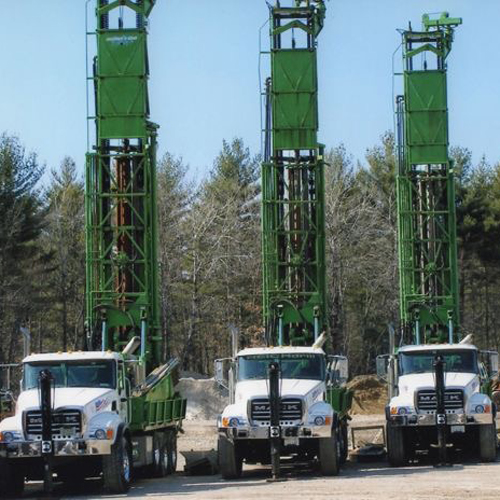
How Deep Should a Water Well Be?

Homeowners in the process of drilling a new or replacement well to supply their home often ask the question “how deep will my well be” of the contractor. If your water well drilling contractor has drilled several other wells in the area, he may be able to offer a rough estimate as an answer.
Unfortunately, it’s often almost impossible to give a completely accurate answer because there is often no way to know the precise well depth needed to produce an adequate yield for the homeowner. Because well prices are often “by-the-foot,” this is an important question to try to answer. As a rule deeper wells cost more than shallow wells to drill and construct in the short term but it’s important to understand that not drilling deep enough can result in problems later that can be expensive to rectify.
Let’s examine some factors that may go into your contractor’s decision of how deep your well should be.
Seasonal Water Table Fluctuations
Throughout the year, water table levels will often fluctuate in response to natural replenishment and local ground water use. That requires the well depth is sufficient to be far below the lowest seasonally expected elevation of the water table. Contractors will often base this on several years of statistical data. For example, levels can fluctuate widely during drought conditions.
Risk of Surface Contamination
Properly constructed, deeper wells ordinarily guarantee protection against bacterial contamination that can originate in surface water. Increasing the well and casing depth means surface water has to travel farther within filtering sources like soil and rock before reaching the water table. The longer water filters, the more likely harmful contaminants are trapped by soil and rock.
Low Yielding Rock Formations
If you live in an area with overly rocky conditions, your well depth may need to be deep enough to provide a storage cavity for ground water. Once the well is drilled, the depth to the top of the groundwater and the pipe diameter will determine how much water is stored in the cavity. The larger the diameter and greater the well depth the more available supply in storage.
Municipal Regulations and Building Codes
Regulations and building codes vary from state to state and often from town to town. Before buying a home with a well, or drilling a new well, check with the state and local water and health departments for any specifics. Most states require a minimum depth of 20 feet to the top of the casing and often require the casing to reach bedrock. Other regulations may address issues such as sealing, grouting and securing the well-cap.
A certified drilling contractor will always give you the most accurate estimate possible before drilling. You need to be aware that a precise depth may be impossible to know accurately up front and that other factors often play a role in determining the final well depth.
Your best sources for information regarding typical depths in your location are the city and state water and health departments, and, of course, your drilling contractor. Skillings & Sons, as an example, can look back at the 40 + years of drilling wells in your area and report back what depths were found locally. Keep in mind, this is at best an educated guess as to the depth of a new nearby water well but their experience in the field and knowledge of your geographic locations can often give them a good idea of what you can expect.

